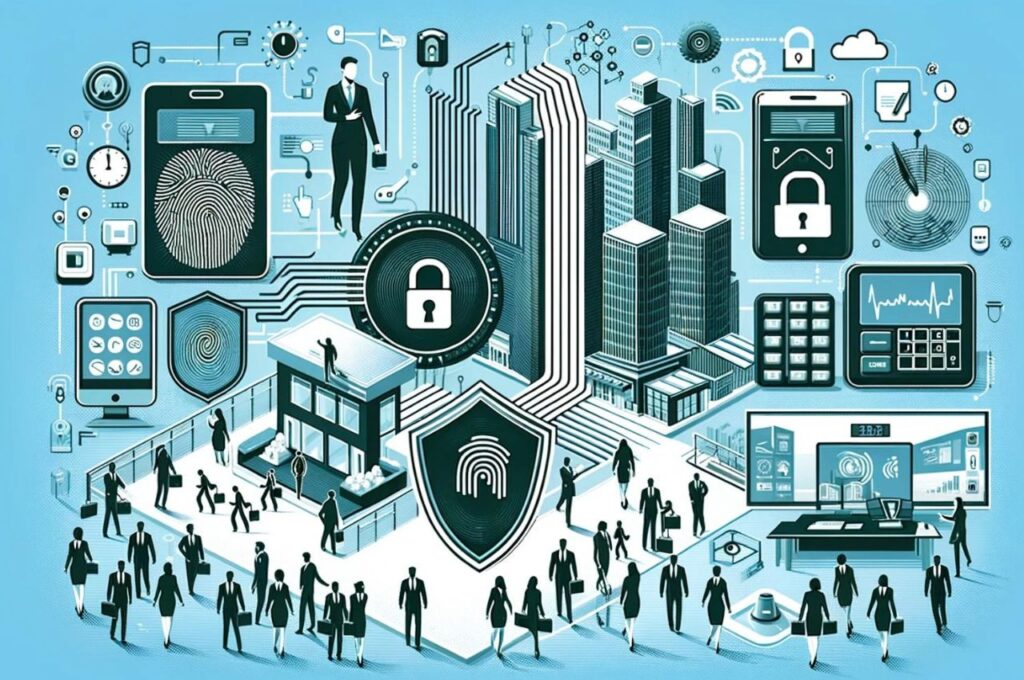
Access control systems are an essential component of any business’s security infrastructure. These systems provide a secure and efficient way to manage who has access to your premises, ensuring that only authorized individuals can enter specific areas. By implementing an access control system, you can enhance the security of your business while also streamlining your operations.
Benefits of Access Control for Businesses
There are numerous benefits to implementing access control systems in your business. Firstly, it provides an extra layer of security by preventing unauthorized access to sensitive areas such as server rooms, storage facilities, or executive offices. This ensures that only authorized employees can enter these areas, reducing the risk of theft or data breaches.
Secondly, access control systems can help you streamline your operations. With traditional lock and key systems, managing keys can be time-consuming and prone to errors. Access control systems eliminate the need for physical keys by providing electronic credentials, such as keycards or biometric data. This not only saves time but also allows you to track and monitor who enters and exits your premises, enabling you to generate detailed access logs for security and auditing purposes.
Lastly, access control systems can improve employee productivity. By granting employees access to the areas they need, they can move freely without unnecessary barriers. This eliminates the need to constantly request access or wait for someone to unlock a door, enabling employees to focus on their tasks and complete them more efficiently.
Types of Access Control Systems
There are several types of access control systems available, each with its own set of features and benefits. The most common types include:
- Card-based Access Control: This system uses proximity cards or smart cards that are assigned to each authorized individual. These cards are presented to a card reader, which grants or denies access based on the credentials stored on the card.
- Biometric Access Control: Biometric access control systems use unique physical characteristics, such as fingerprints, iris patterns, or facial recognition, to verify the identity of individuals. This provides a high level of security and eliminates the need for physical credentials.
- Keypad Access Control: Keypad access control systems require users to enter a unique PIN or password to gain access. This is a cost-effective option but may be less secure than card-based or biometric systems.
- Mobile Access Control: With the rise of smartphones, mobile access control systems have become increasingly popular. These systems use mobile apps to grant users access, eliminating the need for physical cards or keypads.
Factors to Consider When Choosing an Access Control System
When choosing an access control system for your business, there are several factors to consider:
- Security Requirements: Assess the level of security your business requires. Consider the sensitivity of the areas you want to protect and choose a system that provides the appropriate level of security.
- Scalability: Determine whether the system can easily accommodate the growth of your business. It should be able to handle an increasing number of users and access points without compromising performance.
- Integration: Consider whether the access control system can integrate with other security systems, such as CCTV cameras or alarm systems. Integration can provide a more comprehensive security solution.
- User-Friendliness: Look for a system that is easy to use and manage. It should have a user-friendly interface and intuitive administration tools.
- Cost: Assess the overall cost of the system, including installation, maintenance, and any ongoing fees. Consider your budget and choose a system that provides the best value for your business.
Access Control Installation Process
Installing an access control system involves several steps to ensure its proper functioning and integration with your business operations. Here is a general overview of the installation process:
- Assessment and Planning: Start by assessing your business’s specific security needs and identifying the areas that require access control. Plan the layout and placement of access points and determine the type of system that best suits your requirements.
- Equipment Selection: Choose the appropriate access control hardware and software based on your assessment. Consider factors such as the number of access points, the number of users, and any additional features you may need.
- Wiring and Infrastructure: Install the necessary wiring and infrastructure to support the access control system. This includes running cables, setting up power sources, and configuring network connectivity if required.
- Installation of Hardware: Install the access control hardware, such as card readers, biometric scanners, or keypads, at the designated access points. Ensure that they are securely mounted and properly connected to the system.
- Software Configuration: Configure the access control software to match your business’s requirements. This includes programming user credentials, setting access levels, and defining access schedules.
- Testing and Commissioning: Test the system thoroughly to ensure that it functions as expected. Verify that access is granted or denied correctly, and that logs and reports are generated accurately.
Best Practices for Managing Access Control Systems
To maximize the effectiveness of your access control system, follow these best practices:
- Regularly Review Access Levels: Conduct periodic reviews of user access levels to ensure that they are up to date. Remove access for employees who no longer require it and grant access to new employees as needed.
- Implement Multi-Factor Authentication: Enhance the security of your access control system by implementing multi-factor authentication. Require users to provide multiple forms of identification, such as a card and a PIN, to gain access.
- Monitor and Audit Access Logs: Regularly monitor the access logs generated by your system to detect any suspicious activity. Set up alerts for unauthorized access attempts and conduct audits to identify any security gaps.
- Restrict Access During Non-Business Hours: Limit access to your premises during non-business hours to reduce the risk of unauthorized entry. Implement access schedules that only allow access to authorized personnel during specific times.
- Train Employees on Security Protocols: Educate your employees on security protocols, such as not sharing access credentials and reporting lost or stolen cards immediately. Regularly reinforce the importance of following security procedures.
Integrating Access Control with Other Security Systems
While access control systems provide a crucial layer of security, integrating them with other security systems can further enhance your business’s overall security posture. Here are some common integrations:
- CCTV Cameras: Integrating access control with CCTV cameras allows you to associate access events with video footage. This provides visual verification of who entered or exited a specific area, increasing accountability and aiding in investigations.
- Alarm Systems: Linking access control with alarm systems allows you to trigger alarms when unauthorized access attempts are made. This can deter intruders and provide immediate notification of potential security breaches.
- Visitor Management Systems: Integrating access control with visitor management systems enables you to manage and track visitor access. This ensures that visitors are only granted access to authorized areas and helps you maintain a secure environment for both employees and guests.
Conclusion
Implementing access control systems is crucial for businesses of all sizes. By enhancing security, streamlining operations, and providing peace of mind, access control systems play a vital role in protecting your assets, employees, and sensitive information.
To ensure a successful access control installation, it is advisable to hire a professional who can guide you through the process, from system selection to installation and ongoing maintenance. By doing so, you can leverage their expertise and experience to implement an access control system tailored to your business’s specific needs.







